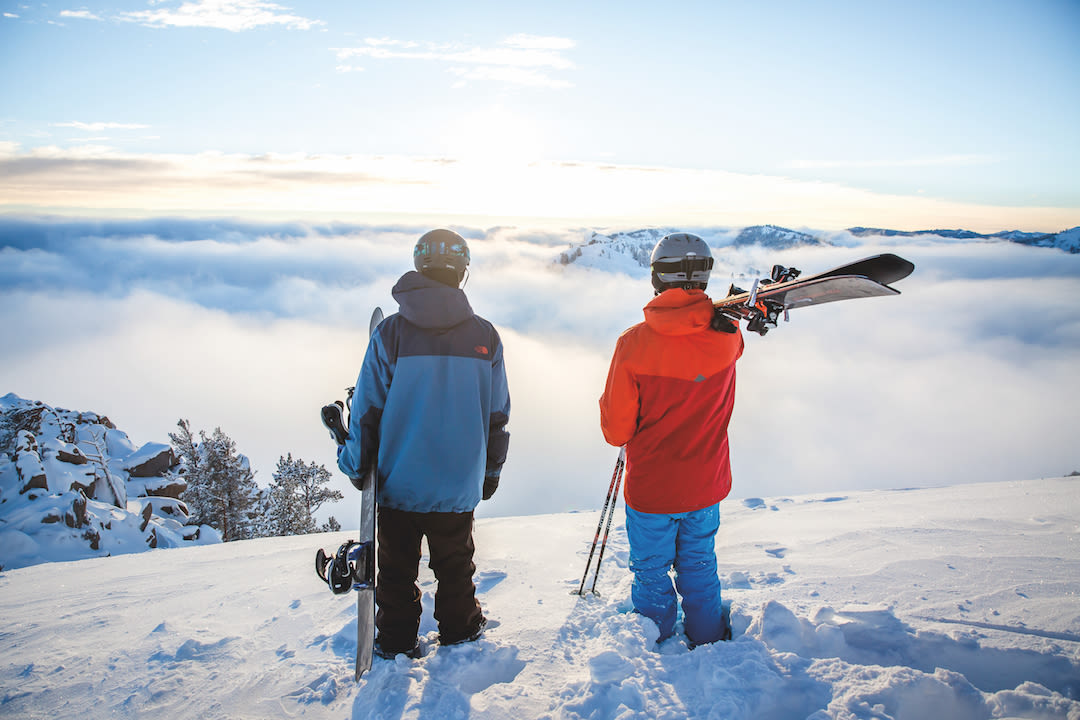
Let the Battle of the Ski Resort Conglomerates Begin
For somebody who has wanted to be among glistening snow and big mountains since he was a boy, David Perry has been working in a curious location since last July. Perry, the longtime No. 2 at the Aspen Skiing Company (SkiCo), operates out of a century-old, red-brick building located a block from Denver’s Union Station. New towers sheathed in glass wall off mountain views. If not for the job, it wouldn’t fit Perry at all.
“I’m a mountain guy. For me to move to Denver, as wonderful a city as Denver is, I’m a fish out of water,” he says.
Perry’s task in this incongruous locale has been the talk of the North American mountain resort industry. He has been integrating a new enterprise—christened in January as the Alterra Mountain Company—to challenge the growing dominance of Vail Resorts. Alterra’s 12 ski areas, acquired in just a few months in 2017, stand chin-to-chin with Vail and its 14 ski areas.
For consumers, the big question is how Perry’s crew will compete with Vail’s powerful collection of ski passes, branded under the name Epic. Vail’s marketing strategy has been to offer discounts and diversity. In return, it asked for loyalty and faith, a commitment to purchase passes months before the first snowfall.
Industry analysts wonder whether Alterra and Vail will jab hard at one another or, in the way of oligarchs, softly so. The answer to that will help determine the sorts of ski packages that consumers will find.
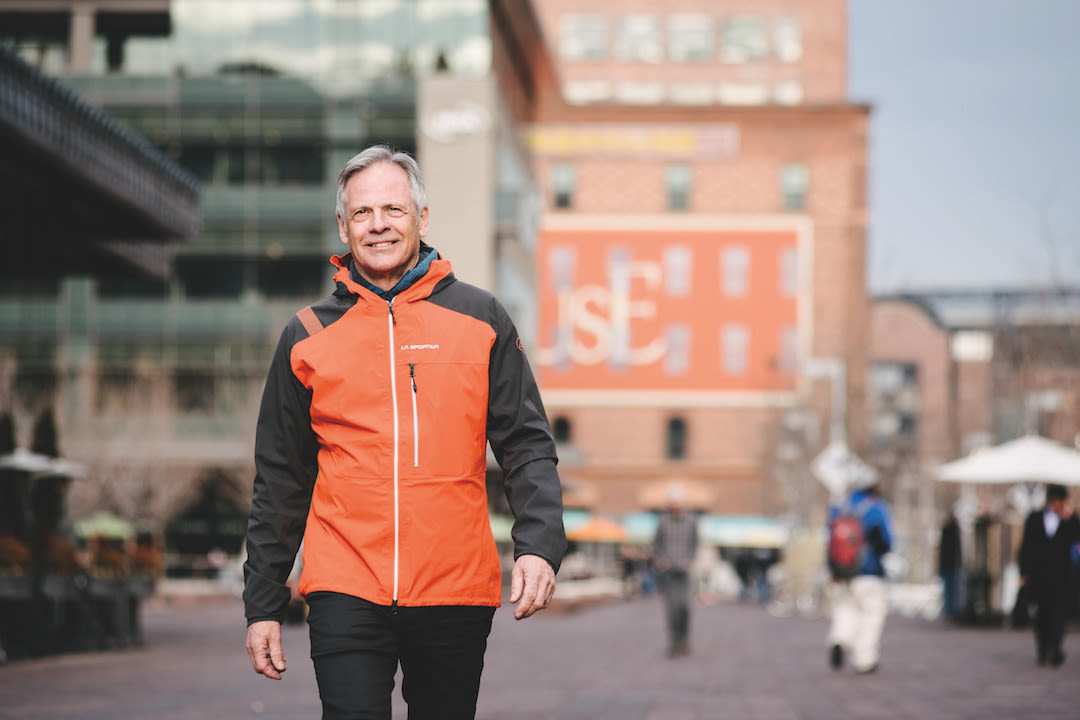
Former Aspen Skiing Company Chief Operating Officer David Perry now heads up the new Alterra Mountain Company, which oversees a dozen mountain resorts. As Alterra’s president and COO, Perry works out of its Denver headquarters.
Image: Ryan Dearth
In late January, Alterra delivered a one-two punch, first by announcing the Ikon Pass. In addition to Alterra’s resorts, the pass offers skiing that will range from unlimited access to a set number of days at 11 other US destinations, including Aspen Snowmass, Alta, Snowbird, Jackson Hole, Big Sky, and Killington. (Additional details had not been made public as of press time.) The next day, Alterra followed up with the news that ski superstar Mikaela Shiffrin—who lives in Vail—had signed on as an investor in the company and ambassador for the Ikon Pass.
Vail fired back three days later with the announcement that Telluride, previously part of the multi-resort Mountain Collective, would participate in next winter’s Epic Pass; passholders will receive seven days of skiing at the southwestern Colorado resort, with no blackout dates.
Beyond the question of competition, however, loom larger ones confronting all 481 US ski areas, plus scores more in Canada. Winters have been shortening slightly and warming, too. Can an industry premised on snow thrive as the climate changes?
Paramount is the question of why anybody would even want to get in the ski business when growth in skier days has been anemic for almost 40 years. In 1978–1979, about the time older baby boomers started raising families, US skier days (one person purchasing a ticket for one day) stood at 50.2 million. Last year, as the first trickle of baby boomers moved into retirement homes, the number stood at 54.8 million.
“It’s flat in skier numbers,” corrects Perry when confronted with these stats. “It’s not flat in revenue.”
Alterra has two deep pockets: the Crown family, owners of SkiCo, and KSL Capital Partners, a private investment company that specializes in travel and leisure. SkiCo and KSL have gotten better acquainted over the past couple of years as KSL became a partner to help complete the development of Base Village at Snowmass.
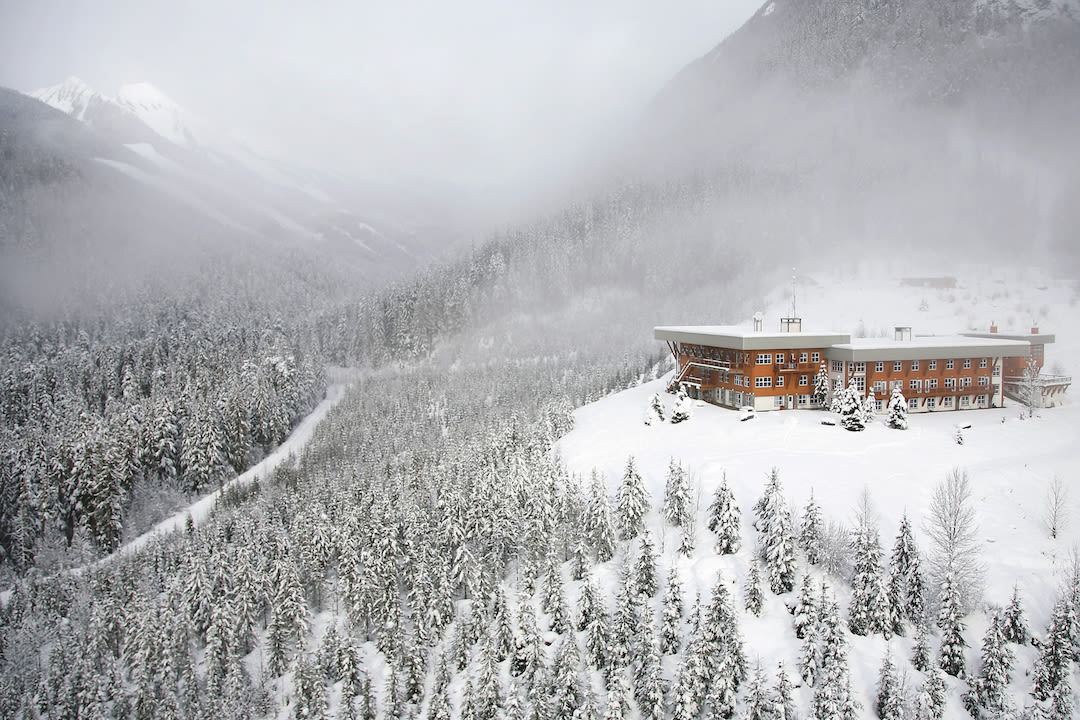
Heli-ski operator Canadian Mountain Holidays (CMH) is part of the Alterra family.
The Crown family is the older money, a product of America’s 20th-century rise as an industrial power. The family fortune begins with Henry Crown, the son of a Lithuanian immigrant sweatshop worker in Chicago. He left school in eighth grade but started a business selling steel in 1915. When he died in 1990, the New York Times described him as a “billionaire whose life exemplified the Horatio Alger rags-to-riches story of American industrialists.” Crown had his fingers in hotels, railroads, and more. Most notable, beginning in 1958, was his stake in General Dynamics, the aerospace and defense company. According to a recent Forbes ranking of America’s richest families, the Crowns wealth totals $8.8 billion. Included in the portfolio are stakes in the New York Yankees, Chicago Bulls, and Rockefeller Center.
KSL, according to its website, has raised $8.2 billion since 2005 for its investments. The company’s top executives spent time with Vail Resorts’ precursor, Vail Associates, including chairman Michael Shannon, who was chosen to lead Vail and Beaver Creek in 1985, when he was 27. Leaving skiing behind in 1992, he moved into warm-weather resorts. Observers believe that KSL’s warm-weather assets can be an important part of Alterra’s cross-marketing strategy.
The story, however, is not simply one of Aspen versus Vail, Cadillac versus Ferrari. It’s far more mature and complex, as is the ski industry altogether in the 21st century. What does still matter is passion. Perry insists Alterra has that passion.
This bold endeavor began taking shape last ski season. Both SkiCo and KSL were already involved with the Mountain Collective, which was designed to compete with Vail’s Epic Pass. “We started to have more in-depth conversations, and we basically realized that a future of a multi-resort company was one that both KSL and the Aspen Skiing Company had been thinking about,” says Perry. “It wasn’t any one thing.”
But two events forced the issue. One was Vail Resorts’ purchase in late 2016 of Whistler Blackcomb, North America’s most-visited winter resort, with 2.2 million skier visits in 2016–2017. The second trigger was the availability of Intrawest, the Denver-based ski company in whose former offices Perry is now located.
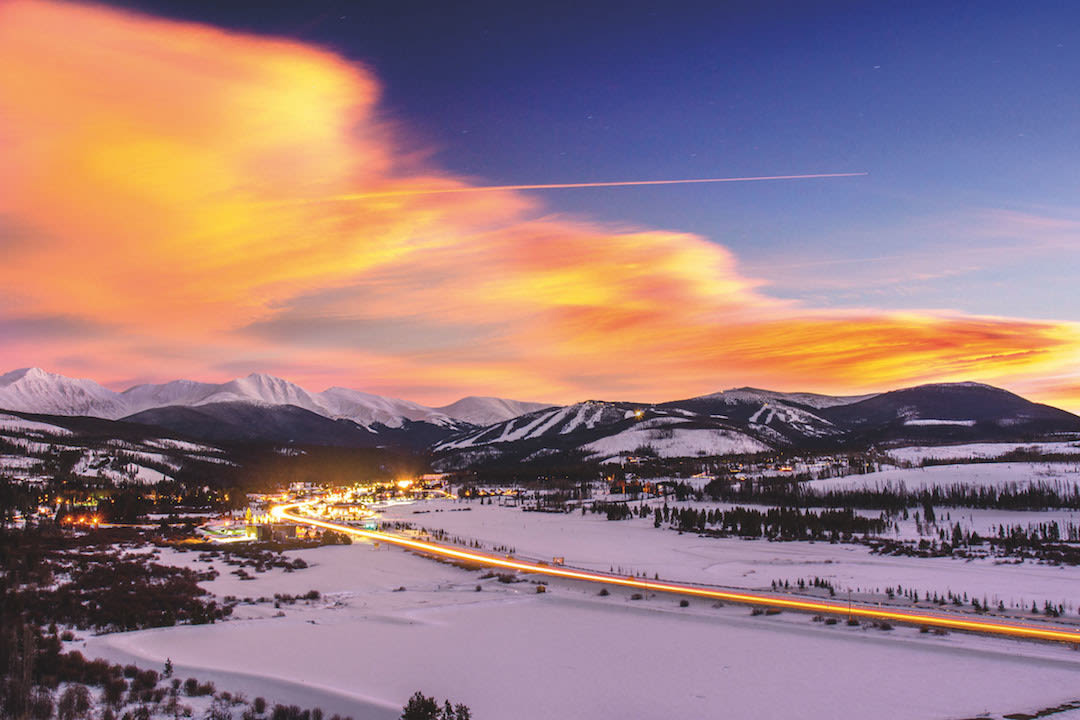
Colorado's Winter Park Resort
First came the $1.5 billion purchase of Intrawest and its assets: Steamboat and Winter Park in Colorado, plus Tremblant in Quebec, Blue Mountain in Ontario, Stratton in Vermont, and Snowshoe in West Virginia. Also included in that package was Canadian Mountain Holidays, the world’s largest heli-skiing company; Perry worked for the company in the Bugaboos while putting himself through college. “There’s a certain symmetry to the job for me that feels right,” he says while sketching the arc of his career.
Next the new partnership bought California properties Mammoth Mountain and its ancillary ski areas: June Mountain and Big Bear Mountain Resort (which consists of neighboring ski areas Bear Mountain and Snow Summit). Together, they can produce more than 2 million skier visits a year. In comparison, the four Aspen Snowmass ski areas collectively do around 1.5 million skier days annually.
Capping off the new company’s buying binge in August was the acquisition of Utah’s Deer Valley, cheek and jowl to Park City Mountain Resort, which is billed by Vail Resorts as the largest ski area in the United States in terms of acreage.
To this, KSL added its prior resorts of Squaw Valley and Alpine Meadows, both in California. Notably, SkiCo’s four Aspen-area resorts are not property of the new partnership.
“They have very quickly assembled a significant group of terrific resorts that will probably compete very well with Vail,” says Andy Daly, a longtime ski industry executive who got his start as a ski patroller at Aspen in 1970. A former executive at Vail, he is now the managing partner in Powderhorn, a small ski area about two hours west of Aspen on Grand Mesa.
The success of Vail Resorts is reflected in its stock price. The company was created in 1997 with an initial public offering at $22 a share. In January, despite widespread drought, stock was trading for $233 a share. From Vail and Beaver Creek, the company expanded to include two more Colorado resorts, Breckenridge and Keystone, just as the concept of loyalty-inducing, highly discounted season ski passes began to spread in the industry. Vail introduced such passes at its resorts primarily to curry the favor of Colorado skiers. It was a change, but not revolutionary.
Rob Katz took over the helm of Vail Resorts in 2006. He set out to buy ski areas, creating a geographically diverse portfolio, which now includes Australia’s largest ski area, Perisher, as well as three small ski areas near Midwestern US cities. The last and most significant purchase was Whistler Blackcomb—ironic given that Blackcomb started out under partial SkiCo ownership in 1980.
In 2008, Katz introduced the Epic Pass, at once lean and muscular. It’s branded as no other ski pass, with the Epic moniker on Vail Resorts offerings from burgers to a smartphone app. Sales of the pass increased 12 percent annually from 2012 to 2017, even without Whistler, per the company’s March 2017 investor relations report. This season, they’ve reached 750,000, said Katz at a talk he gave in January before the Outdoor Retailer Snow Show in Denver. “They’re well along the way of reaching their goal of selling a million Epic Passes a year,” says Rick Kahl, editor of Ski Area Management, an industry trade publication. The success of the pass has, he says, allowed Vail to skim the cream off the destination market.
Epic Pass sales deliver stability to Vail’s revenue stream. Regardless of what kind of winter it is, dry as popcorn or fresh snow every third day, the company has money in the bank months before the lifts start operating. And it is a lot of money. Kahl quickly crunches some representative numbers: $600 a pass at 600,000 passes equals $360 million. “That provides a lot of stability from a business standpoint,” he says. The all-access, unlimited pass price for 2017–2018 was $859.
How can you make money by virtually giving away your product? The key, explains Chris Diamond, a ski industry consultant, is that not everyone uses the passes. Sure, some people will buy a season pass and ski 100 days. Others will buy a pass thinking they’ll get to the slopes often—and then use it just a few times, if at all. Think of it like buying a year’s membership to a gym.
As season pass prices have dropped at Vail Resorts’ ski areas, however, ticket window prices have risen. They now approach $200 a day during holidays at some resorts. “You only [pay that rate] once or twice, unless money is of no issue to you, and then you’ll commit [to a pass],” says Diamond, a former chief executive at Steamboat and other resorts.
Other ski area operators—including SkiCo—have not stood still, introducing a flurry of discounted friends-with-benefits passes among resorts. The net result has been to allow people more freedom to ski at multiple resorts and at less up-front cost. At $519, for example, the Mountain Collective has allowed two days of skiing plus discounts on additional days at Aspen Snowmass, Jackson Hole, and 13 other destinations in North America, Australia, and New Zealand. Or take the Powder Alliance, which includes three free days at its 16 affiliated resorts in North America, Chile, and Japan with the purchase of a season pass at any one of those areas.
Now that Alterra has introduced the Ikon Pass, the consolidation of multiresort access deals has started. The Mountain Collective will again be offered for 2018–2019 (minus Telluride), but the Rocky Mountain Super Pass, M.A.X. Pass, and Cali4nia Pass will all go away, as some of their destinations are folded into the Ikon Pass.
Perry, meanwhile, downplays the competition. “We don’t stay up at night thinking about other resort companies,” he says. “We do stay up at night thinking about our company.”
If sparing in details, he stresses the company’s opportunities for long-term growth. “People in crowded urban environments are increasingly craving outdoor time, and that’s exactly what we sell. And also family time. For most people, the most valuable commodity these days is time, and time well spent, with family. I think we are positioned in a sweet spot for growth.” The California market is part of this strategy, as Alterra aims to have resorts, adds Perry, “both where people live and where they want to travel.”
If Perry does not exactly create a PowerPoint presentation for how Alterra will differ from Vail, he offers some hints. One is the intent to maintain broad authority among local resort managers. “It’s vitally important for a resort to have strong local leadership that is closely connected to the community,” he says. “The resort and the community in which it operates are inextricably interlinked.”
In its political activism, Alterra will resemble SkiCo, which wears its worries about climate change and other environmental matters on its sleeve. The new company intends to reach out to policymakers and wants its guests, many of them influential, to reach out to those policymakers, too. Both ownership groups—the Crown family and KSL—support this position, says Perry.
Perry has spent his adult life among mountain resorts. He grew up in Canada, the son of a United Church minister. The family of eight moved every few years. No matter how distant, however, they visited the Canadian Rockies, young David in awe of the view from the rear-facing backseat of the family’s Pontiac station wagon. Skiing was a constant, too: “We would drive two hours to ski 200 feet of vertical.”
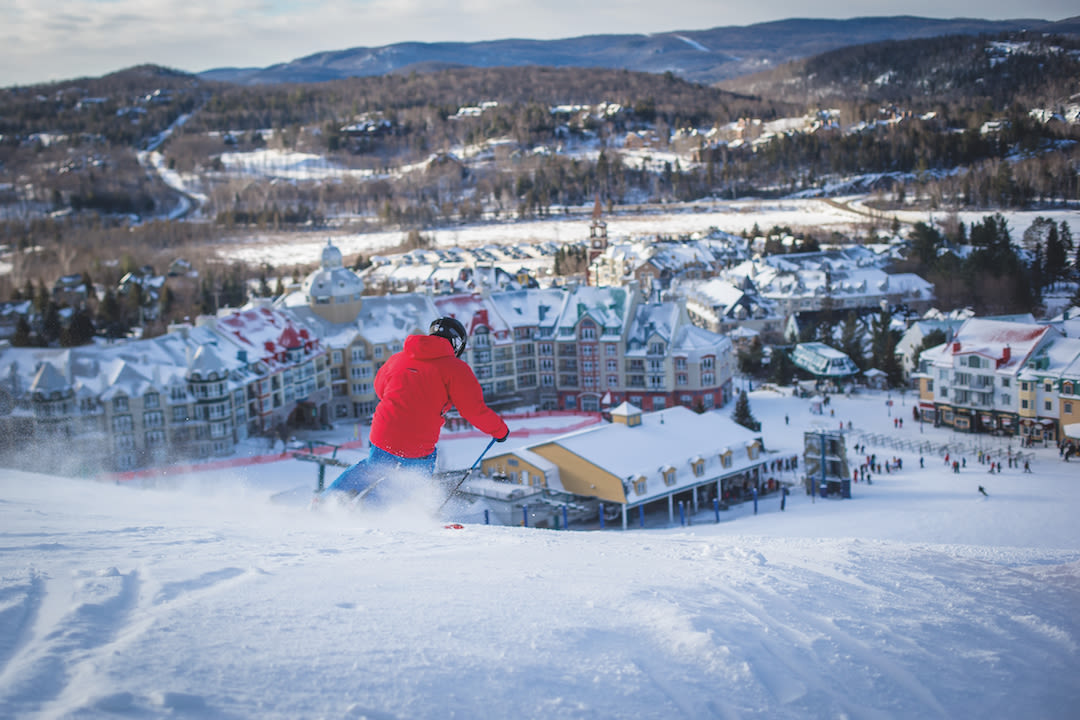
Tremblant in Quebec, Canada.
Perry studied kinesiology at Simon Fraser University in Vancouver, but his future was in the mountains. In 1980, sensing opportunity, he moved to Whistler, where a new resort, Blackcomb, was then coming out of the ground. He was just one of 16 ski instructors. He stayed on through the 1990s, doing just about every task possible at a ski company. In 2000, he arrived in Colorado to lead the state’s ski trade organization. Two years later, he joined SkiCo.
That combination of experience and passion made Perry the obvious choice to pull together Alterra. “David can get along with just about everybody,” says Kahl. “He’s a really likeable guy, yet he can make the tough decisions.”
Having worked for both privately and publicly owned companies, Perry says he prefers the former. With a publicly owned company, he says, “You really have to show percentage growth, quarter over quarter, year over year, and that consistency of business does not align well with the mountain resort business.”
That said, Vail Resorts and Alterra are alike in wanting geographic diversity among their resorts. They also both operate out of urban areas. Vail Resorts left Vail for corporate offices in suburban Boulder almost 15 years ago. Perry says there are good reasons to be in a city. You need a large labor pool to fill functions from IT to marketing, human resources to finance, as required of a major company. And even a high-priced city is more affordable than somewhere like Aspen. If not a mountain town, says Perry, Denver is the next best thing: a mountain city.
How can Alterra get more customers or, at least, grow revenues? Certainly, challenges lie ahead. The lion’s share of ski resort revenue has always been in downhill sliding. According to research conducted by RRC Associates, a Boulder-based firm, 88 percent of it derives from winter. Of that, lift tickets—including season passes—provide a little less than half, says David Belin, RRC’s director of consulting services, with the rest coming from food and beverage sales, retail stores, and other services and goods.
North American ski companies have tried to grow their summer revenue through new activities such as ropes courses, alpine coasters, and lift-served mountain biking. They say they hope to eliminate summer red ink. But there’s no summer analog to a $120 lift ticket. Some Colorado mountain towns actually make more money in summer than in winter, as measured by sales tax collections. But that doesn’t necessarily mean the ski area operators are benefitting. The challenge for them, says Belin, is to create critical mass during summer.
Another tall task is a demographic one. Baby boomers remain active as no generation before has in their 50s, 60s, and 70s. But their total numbers are receding, eclipsed by millennials, who are better educated, more likely to live in cities, and more ethnically diverse.
Perry doesn’t share his company’s roadmap, but he does suggest a general direction: Alterra’s resorts in eastern Canada have had great success in summer. He also points out that the ski industry itself has had pockets of growth. “There are places where it is absolutely happening,” he says.
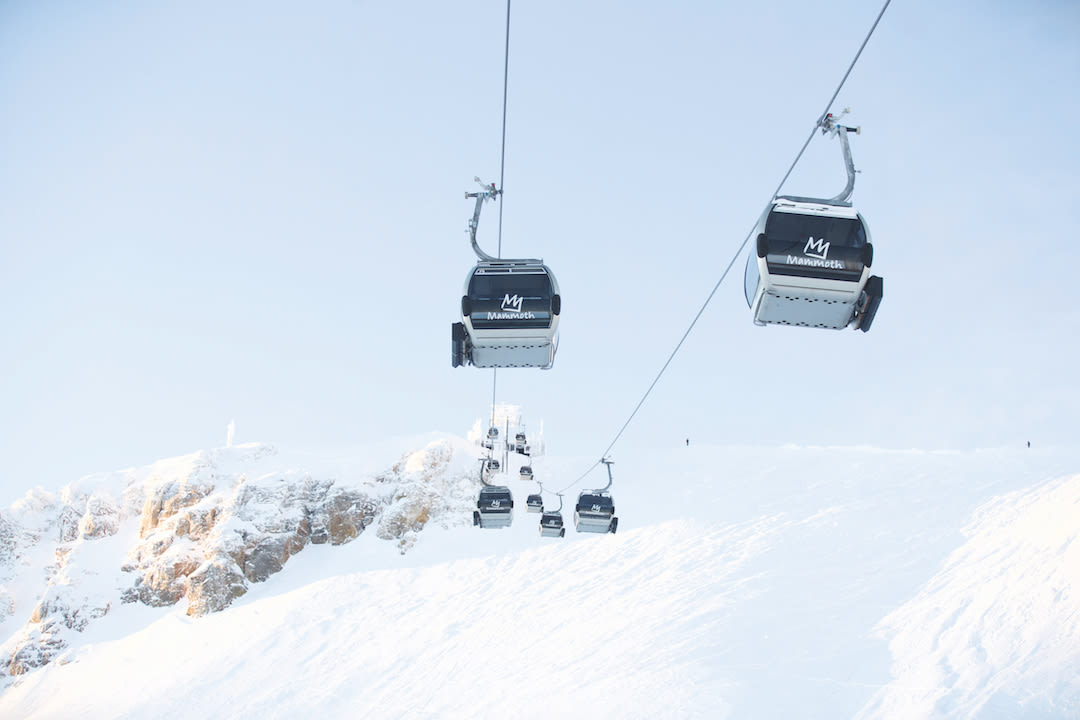
California's Mammoth Mountain.
Look to the West Coast, says Diamond. He points to the purchase of Mammoth and its related resorts proximate to Southern California’s 24 million residents—including high-income millennials. “That move was the most logical, probably the most expensive in terms of what they had to pay, but the one that if I were in the Vail offices, I would say, ‘Dammit. Good for them. What do we do now?’”
Karl Kapuscinski, owner of Mountain High ski area, within a three-hour drive of Los Angeles, concurs. The Southern California demographic he sees now can deliver growth for destination ski resorts for years to come. He describes a new ethnic mix at Mountain High: about 60 percent from minority groups, especially Latino and Asian. These customers further reflect Southern California’s population in that they’re educated, have disposable income, and favor active, outdoor lifestyles. Kapuscinski also oversees Stevens Pass near Seattle, where he sees similar demographics.
Still, the question lingers: Who loses as Alterra takes shape? The increased competition will force Vail, the argument goes, to become a better company. Consumers will most assuredly gain. Bill Tomcich, who runs central reservations agency Stay Aspen Snowmass (owned by SkiCo), makes an analogy to the global alliances among airlines to reward frequent flyers with more travel choices and perks. “Skiers who make multiple annual trips realize additional value in pass purchases through a collection of different resorts,” he says.
Will Alterra add to its stable? Possibly. The company has those deep-pocketed owners, after all. What’s more certain right now is that within a climate of continued consolidation, whether in corporate America or the world of mountain resorts, this latest venture looks to be on particularly solid ground.














































